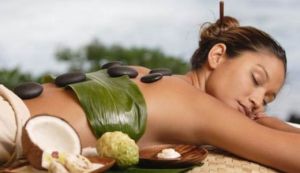The Truth Revealed About Skincare Products – Ingredients to Avoid
By Melanie Carter
Let’s start with the question ‘What is natural skincare?’ Well the problem is there is no definitive description of natural so companies can include one natural ingredient such as Aloe Vera juice or Jojoba oil giving you the impression the product has all natural ingredients without actually saying so. “Seeing is believing” as they say and some skincare product companies use colours and packaging to lure you into the belief that the product is natural. Think about it. Does pure mean natural? Does clear mean natural? Does ‘Includes Minerals’ mean natural? Fragrance free? No. Natural in our opinion means that the source is not artificial i.e. man made or produced by chemical synthesis (synthetic). It originates from a natural source such as tree, plant, flower, seed and is extracted without altering the chemical make up of the material.
What effect do artificial ingredients have on my body?
Well petrochemicals are pretty bad as they actually have no nutritional value. For example petroleum jelly like Vaseline acts as a barrier to the external elements and the skin whereas shea butter contains valuable nutrients that are readily absorbed into the skin. The cumulative effect of using artificial ingredients is the potential for it to be an irritant, carcinogen or neurotoxic and disrupt hormones after years of use and research has also supported links to breast cancer in particular with women. In addition the body forgets how to produce oils naturally. The best example of this is when you have been using Vaseline for years but forget it one day, your lips become so dry, whereas if you had never used it before your lips will produce their own oils for natural moisturising.
The skin is permeable which means that it allows molecules to pass through it and enter the bloodstream which is great for delivering for their therapeutic benefit, but bad if you are using a toxic artificial ingredient.
It is also important to mention and so as to add balance to the argument for naturally produced skincare products that truly natural does not mean that it cannot be toxic. Here are a few examples of natural ingredients that are toxic, alcohol (ethanol) for example is highly toxic at the wrong level of consumption, some essential oils such as Camphor, Wintergreen and Mugwort are also deemed extremely toxic.
Ingredients to look out for:
1. Petrochemicals Petroleum based e.g. petrolatum, mineral oil, and paraffin – it prevents skin from breathing and has no nutritional value. It is very cheap to produce which is why it is used in abundance, but it can exacerbate eczema and cause dermatitis.
2. Parabens – They are found in the ingredients list of skincare products like creams, shower gels, lotions and liquid soaps. They are synthetic preservatives which can cause skin irritations and have been linked to breast cancer as they mimic the hormone oestrogen. A study (Dabre et al 2004) found traces of parabens in breast cancer tissue. Ones to look out for is anything ending in ‘paraben’ e.g. butylparaben, methylparaben, propylparaben & ethylparaben. Be very clear, preservatives are needed to kill bacteria in anything containing water, but there are kinder alternatives to the parabens that may carry health risks.
3. Diethanolamine (DEA) – also listed as Cocamide DEA, TEA, Lauramide DEA, Linoleamide DEA – it is used as an emulsifier to mix oil and water it also can increase the foaming potential in personal care products and can thicken water – there have been safety issues around this ingredient as when they mix with other ingredients they could be carcinogenic.
4. Artificial colours – are linked to Attention Deficit Hyperactivity Disorder (ADHD) and allergy according to the Food Standards Agency.
5. SLS (sodium lauryl sulphate) & SLES (sodium laureth sulphate) – These are another commonly used foam enhancing ingredient. You will find this ingredient in liquid hand soap, shower gel and bubble bath. If SLS or SLES are used in high concentrations (this is determined by the company and not shared with the customer) it could cause skin irritations. They are legal because they are used in wash off products, however we tend to use these products several times a day and some residue may be left, which will have a cumulative effect.
6. Triclosan – an antibacterial thought to be a carcinogen and is contained in some hand soap, deodorants, shaving cream and toothpaste. Overuse of this ingredient could have the opposite effect where bacteria could become resistant to it.
8. Formaldehyde (formalin / formal and methyl aldehyde, DMDM Hydantoin and Urea-Imidazolidinyl) is thought to be a carcinogen. It is released when mixed with releasers mentioned above and can irritate the eyes, nose and throat areas.
9. Perfume & fragrances – are synthetic and often contain over 100 ingredients to get the ‘right’ scent. The trouble is, it is not a requirement to list these ingredients, so you will just see ‘parfum’ or ‘fragrance’ therefore not knowing if you are allergic to any of the ingredients.
Eco cleaning around the home
Some cleaning products are not subject to labelling laws as noted in the Green Cleaning articles so the dangers are hidden. Buyer beware!
The information above refers to possible causes of illness and does not imply that if you use these products you will get any of these illnesses. We are simply saying that you could reduce the risk by not using them.
